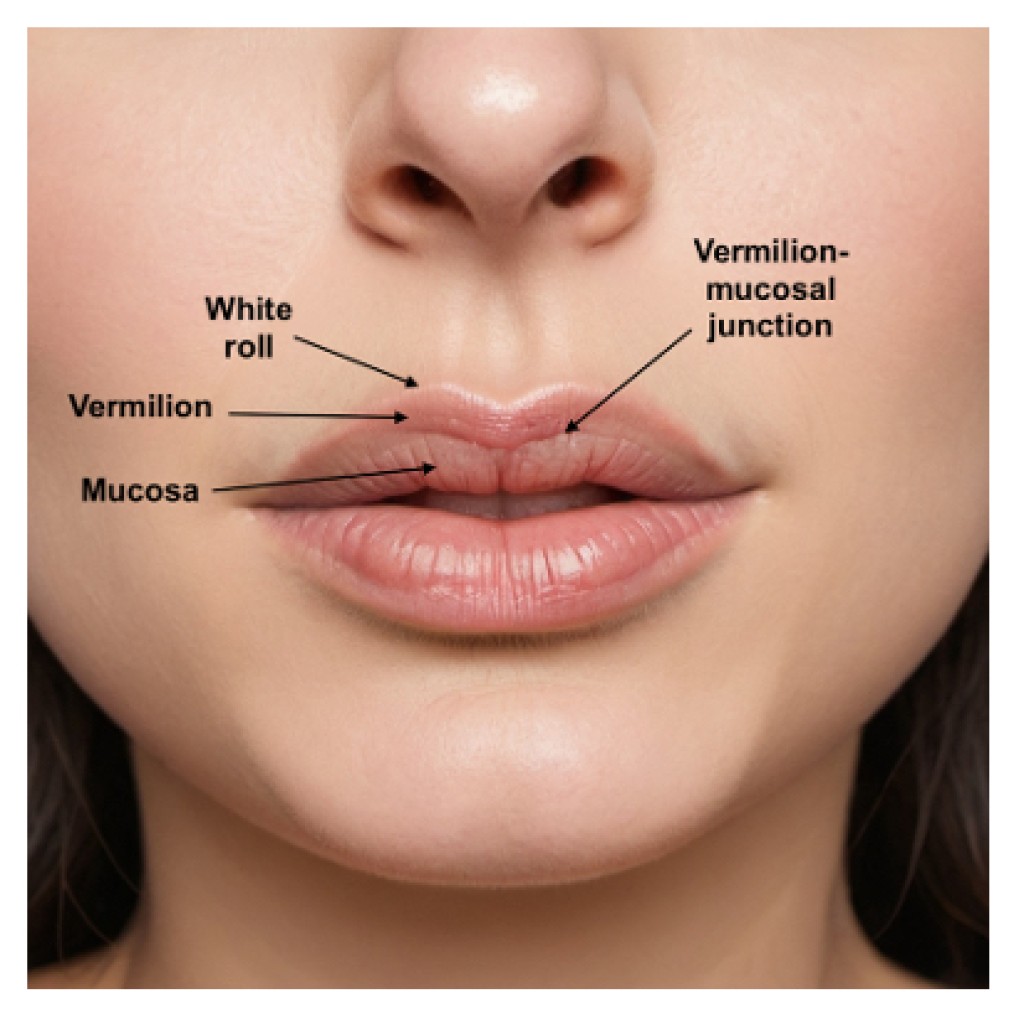Facial lacerations in children should ideally be treated within 8 hours. Depending on age, children may require anesthesia to undergo adequate cleaning and repair of the lacerations.
Wounds should be washed well to remove any dirt or contamination. Children with facial lacerations should be assessed for additional injuries, such as bone fractures and nerve injuries, which may require repair.
When repairing facial laceration, it is important to make sure that critical landmarks are aligned adequately. For example, in children with lip lacerations, it is important to make sure that the white roll and the vermilion-mucosal junction are well aligned when performing repair (Figure 1).

Figure 1: Important landmarks of the upper lip
After a facial laceration, the scar may look pink and thick. The scar takes 12-18 months to reach its final appearance. It is important to perform scar care to make sure the scar looks as good as possible. There are three important things you need to do to take care of the scar:
- Sun protection: exposure to the sun can cause the scar to darken more than the surrounding skin, which can make it more visible. It is important to protect the scar from the sun. Ideal sun protection is to avoid sun exposure by using a large-brim hat whenever outside. Your surgeon may also recommend using sunblock containing zinc oxide with an SPF of 50 or greater.
- Silicone: silicone gel or silicone sheets have been shown to improve the appearance of scars. Silicone should be started as soon as the laceration is healed, 2-3 weeks after laceration repair
- Scar massage: Scar massage can soften the scar and make it less thick. Follow your surgeon’s recommendations for when and how to perform scar massage.
If your child has a facial laceration or a scar from prior injury, contact the Texas Children’s Hospital-North Austin plastic surgery clinic or schedule your appointment online.